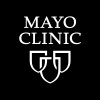
An Open Label Extension Study to Evaluate Inhaled Treprostinil in Adult PH With ILD Including CPFE...
Pulmonary HypertensionInterstitial Lung Disease1 moreThis is a multicenter, open-label trial to evaluate the safety and efficacy of inhaled treprostinil in subjects with pre-capillary pulmonary hypertension (PH) associated with interstitial lung disease (ILD) including combined pulmonary fibrosis and emphysema (CPFE). The study will include about 266 patients who completed all required assessments in the RIN-PH-201 study at approximately 100 clinical trial centers. The study will continue Your participation in this study is voluntary and will last until you discontinue from the study or the study ends. The study will continue until each subject reaches the Week 108 visit or until inhaled treprostinil become commercially available for patients with PH associated with ILD including CPFE (whichever is sooner).

Intraventricular Drain Insertion: Comparison of Ultrasound-guided and Landmark-based Puncture of...
HydrocephalusIntracranial HypertensionPuncture of the ventricular system is one of the most frequently performed neurosurgical interventions. This procedure is commonly performed in order to treat and/or measure pathologically elevated intracranial pressure.Therefore a safe and fast surgical procedure is needed. Currently the "landmark-based" placement of intraventricular catheters is the gold standard. However it is known that more than 60% of the catheters are not accurately placed in accordance with "landmark-based" procedures. When the catheter is not placed accurately multiple punctures may be required. In this study, the investigators aim to investigate prospectively whether ultrasound guidance leads to a lower number of incorrect catheter placements, and whether this guidance consequently decreases the number of punctures.

Assessing Alternative Approaches for Blood Pressure Control: A3BC Trial
HypertensionAn estimated 76 million adults in the United States over the age of 20 have hypertension (HTN); which translates into 1 out of 3 adults. Globally the prevalence of HTN is over 25% for adults, and accounts for approximately 13.5% of all deaths. Given the aging of the population together with increases in obesity and sedentary behavior, it is not surprising that HTN is projected to increase significantly over the next several decades; with over 1.5 billion adults having HTN by the year 2025. Thus the public health implications to preventing and/or reducing elevations in blood pressure are substantial. This study compares the efficacy of two different non-pharmacologic interventions (device guided breathing and isometric hand grip exercises) used alone and in combination for lowering blood pressure. This pilot study will include 30 adults with stage 1 hypertension. The primary outcome is the change in blood pressure from baseline to 8 weeks. Secondary outcomes include change in blood pressure from 8 weeks to 16 weeks and acceptability of the interventions by participants. The knowledge gained from this study can provide information on non-pharmacologic methods that may be useful in decreasing blood pressure. Such knowledge may be especially useful for patients for whom access to medications and health care is limited and among patients unwilling to take or intolerant to pharmacologic therapies.

FSU Hypertension Self-Care Training Study
HypertensionThe purpose of this study is to compare the effectiveness of two forms of self-care training on the overall health of adults with hypertension.

Efficacy of the Brand-name Latanoprost and One of Its Generic Version in Primary Open Angle Glaucoma...
Primary Open Angle GlaucomaOcular HypertensionThe purpose of this study is to evaluate and compare efficacy and tolerability of the brand-name latanoprost and one of its generic version in subjects with primary open angle glaucoma or ocular hypertension. This randomized, double-blinded, cross-over design study has a 4 months follow-up. There are two periods of 8 weeks. During the first period, subjects put brand-name latanoprost in one eye and the generic version in the other one. In the second period, drops are switched from one eye to the other. There are intraocular pressure measurements (diurnal curves) on day 0 (before treatment), at 8 weeks (at the end of first period) and at 16 weeks (at the end of second period). Variations of intraocular pressure in each eye will be evaluated.

Extension to CQTI571A2102 to Evaluate Long-term Safety, Tolerability and Efficacy of Imatinib in...
Pulmonary Arterial HypertensionThis study was an extension to study CQTI571A2102 and was to evaluate the long-term safety, tolerability and efficacy of QTI571 (imatinib) in severe pulmonary arterial hypertension patients.

Single-arm Study of Symplicity™ Renal Denervation System in Patients With Uncontrolled HyperTensioN...
Adults With Uncontrolled HypertensionThis study is to evaluate efficacy and safety of renal denervation in the treatment of uncontrolled hypertension. This study will enroll a minimum of 40 and a maximum of 45 subjects. The study will be conducted at up to 8 actively enrolling investigational sites. The primary endpoint is change in Office Systolic Blood Pressure from baseline to 6 months post-procedure.

Efficacy, Safety, Tolerability and Pharmacokinetics (PK) of Nilotinib (AMN107) in Pulmonary Arterial...
Pulmonary Arterial HypertensionThe purpose of this trial was to establish the safety, tolerability and PK of nilotinib in this population and to test the hypothesis that 6 months treatment with nilotinib will significantly reduce pulmonary artery resistance.

Effect of Cocoa Consumption in Cardiovascular and Immune Parameters
Arterial HypertensionArterial hypertension is one of the most preventable risk factors for stroke, cardiovascular and renal disease. Cocoa is rich in a subclass of flavonoid called flavanol this increase nitric oxide production and is involved in controlling blood pressure.

Can Nebivolol Reverse Inappropriate Left Ventricular Mass in Hypertensive Patients?
HypertensionThe purpose of this study is to evaluate if a drug called nebivolol can reverse inappropriate left ventricular mass (LVM) when compared to the standard of care drug metoprolol.
